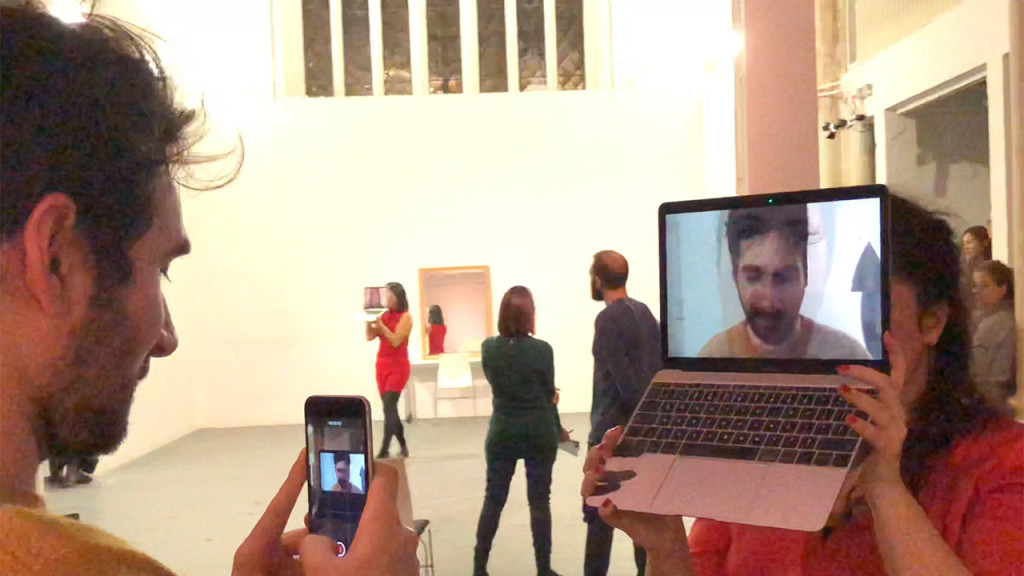
I’m reflecting on the touch exercises we did in class in week 9. Since then, I’ve been making work on touching and looking, mediated by devices. The exercise has informed:
- my group research performance, Mirror,
- my phone game for Approches to Play 1, Chromapose,
- my current game for Approaches to Play 2, which builds on Chromapose,
- and my final research project for this class.
In class, I touched fingertips with my partner for a minute and thirty seconds. Then I wrote.
“look at each other for 10 seconds but only so you don’t violate anyone’s comfort. wheretf else are u supposed to look for 1 min and 20 seconds.”
Then I filmed her with my phone.
“felt a power imbalance. i felt it easier to look at the screen than to look at her. … she felt more performative, more rehearsed. but if i smiled she would smile back and only one camera would see it. … i felt more like i was violating her privacy.”
I became aware of how inserting one object, a phone with a camera, unbalanced the power dynamics so deeply. Recording someone with a phone is a common, accepted activity in our society – much more than touching fingertips together. But she was aware of it and looking right back at me. An object both powerful and vulnerable.
For both Mirror and Chromapose, I designed game structures which incentivized people to interact with each other. I like the idea of touch but – as I rediscovered with this exercise – actually touching is awkward for me. I had to create a magic circle, where normal rules were suspended and players could be comfortable to move with each other. Just the right amount of unease. For Chromapose, this is why I designed the phone interface to direct players to move in a specific direction. I choreographed their movements with their phones’ gyroscope, and they arranged themselves in space by looking at each other. Still then, I couldn’t get them to touch each other. For my Approaches to Play project this term, I’m extending Chromapose to choreograph a dance between two players, mediated with phones and glances and maybe even contact.
In some ways, we recreated the contact exercise for our Mirror performance we did a few days after it. I touched a stranger with a frame between us. I looked straight into his eyes. Afterwards, I felt shy to talk to him whenever I saw him elsewhere. The magic circle was gone. We also staged “contact at a distance” with technology in between, by putting laptops with cameras in front of our faces. I was blind. I felt at once exposed and hidden. The audience could see us but only our prerecorded faces mixed with their live ones on a screen. We hoped to evoke the unequal, mediated ways of looking and interacting with each other in our mediated society.
How do the topologies created by devices and their cameras choreograph our movements through the world? I think smartphones open up so many new ways of looking and moving, from zombie walking in the street to extending your arms with selfie sticks to FaceTiming someone on the other side of the world. With the advent of smartphones, anything can be recorded covertly, posted on the Internet without your knowledge. People self-police themselves to be undetected by cameras above (surveillance) and below (the topological network of everyones’ phone cameras).
Beyond phones, the Internet has made possible myriad configurations of remote viewing and control. For my final research project, I’m putting even more layers between people – the whole Internet. It’s still possible to have meaningful contact, in some sense of the world, but it’s mediated through so many networks and structures. Livestreaming. Chat rooms. So many topologies of looking, so many different possible configurations. I hope to design a online participatory artwork which produces novel ways of interacting with people.